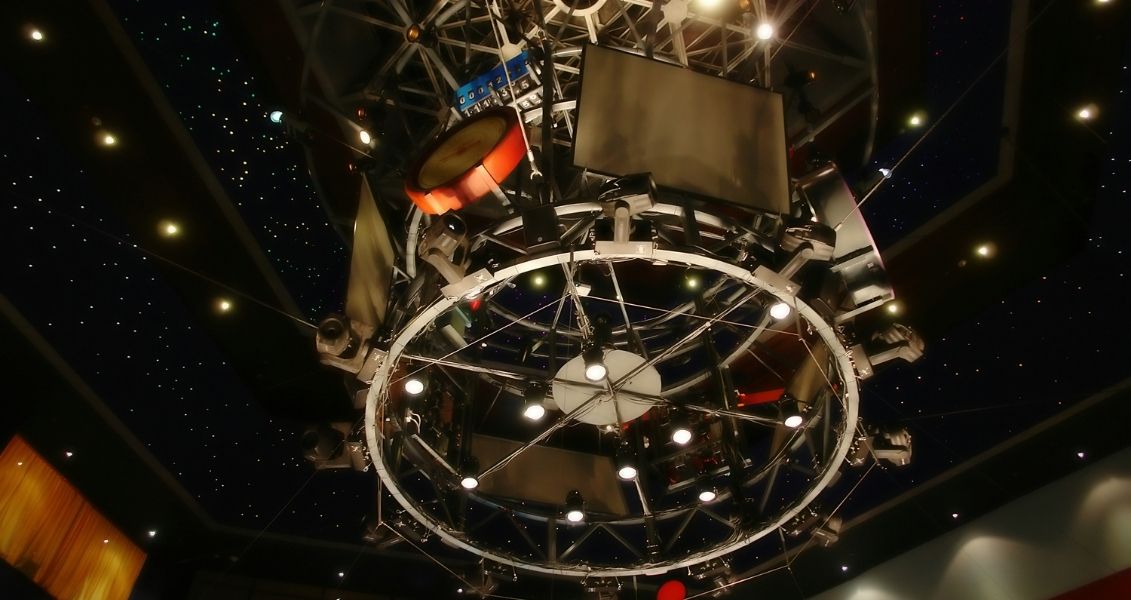International Day of Planetariums
What kind of holiday is this?
It is natural for people to admire the glow of the stars in the night sky. This unearthly beauty fascinates, inspires, makes you think about the eternal harmony and immensity of such a mysterious phenomenon as the universe. Unfortunately, in the modern conditions of a big city, natural starlight is often impossible to see. It is most convenient to demonstrate the starry sky in special institutions – planetariums. Thanks to the specialists there, you can not only admire the starry sky without obstacles, but also expand your knowledge of astronomy. To convey information about the important mission of planetariums to people, there is a special holiday — International Day of Planetariums, which is celebrated annually on the second Sunday of March. In 2021, this event falls on March 13.
How did the idea of celebrating the International Day of Planetariums come about?
Planetarium called both the institution and the special device that is common to most of these institutions. This is a large projection screen in the form of a dome, on which stars, planets and other celestial bodies are realistically demonstrated in motion. Everything is reproduced with the help of various technologies – optical, electromechanical, laser. It is possible to simulate a picture of the night sky from any point on the earth’s surface and at any moment in time – now, in the past or in the future.
Archimedes Planetarium
The first planetarium known in history is considered to be the invention of Archimedes. In the 2nd century BC, he created a mechanical model of the Sun, Moon and five planets. Archimedes’ planetarium was powered by compressed air. After the death of the inventor, the device was taken to Rome, where it caused surprise and admiration. But after the fall of the Roman Empire, until the Middle Ages, planetariums were forgotten.
In the 13th century, an artifact from the Middle East reached Europe – a tent that rotated with a special mechanism around its axis, and the ceiling was perforated with numerous small holes in the shape of constellations. The viewer, who was inside the tent, received the illusion of observing the movement of the stars even in daylight.
Mechanical devices imitating the movement of the planets and the Sun made it possible to more accurately reproduce celestial processes. The Italian Giovanni Dondi, a physician and astronomer, in 1348 created a mechanical model based on Ptolemy’s geocentric system. Subsequently, the heliocentric system of Copernicus and the discovery of gravity by Newton changed people’s ideas about the structure of the universe.
“Orrery”
The British watchmaker George Graham in 1704 became the author of the first mechanical model of planetary motion based on the heliocentric principle. A copy of this model was created for Charles Boyle, Earl of Orrery. Since then, the term “orrery” has become a common name for similar mechanical models of the solar system.
Orreries were quite small devices, while astronomers sought to reproduce the celestial sphere on a larger scale. This was achieved by Adam Walker, who created a prototype projector for planetariums. The device, which combined mechanical movement with the method of projection, was a success in public lectures on astronomy in the 1780s.
In 1903, the German scientist Oscar von Miller began planning the creation of the German Technical Museum, which must have a planetarium. To find a technology that would allow to reproduce the structure and dynamics of the starry sky, von Miller turned to the optical company Zeiss. The company’s engineers proposed installing a fixed dome as a screen on which images of celestial objects will be projected. It took years to develop all the details, and during the First World War, work was suspended altogether. Finally, in 1924, the first planetarium in the modern sense was opened in Munich.
After the Second World War and the division of Germany into western and eastern parts, the production of planetariums resumed only in 1954. During the absence of Zeiss on the market, there were several attempts to create new models of planetariums, for example, by the California Academy of Sciences.
Space competitions
The 50s and 60s of the last century became a period of space competition between countries. Many planetariums were opened all over the planet, especially the USA and the Soviet Union were competing with each other. In the United States, about 1,200 planetariums have been installed in schools as part of the space program. In 1977, the StarLab portable planetarium was created in the city of Lincoln, Massachusetts, which gained wide popularity in the world.
In the future, the technology of planetariums continued to improve. In the 1980s, projectors with computer graphics appeared, then planetariums began to work on a fully digital projection system. A significant achievement was the development of home models of planetariums that can be easily carried in a bag. Despite the fact that such models are considered semi-professional, they are capable of projecting images of 10,000 stars onto the ceiling of the room.
In order to planetariums in different countries could effectively cooperate, share experience, innovations, improve the quality of services, in 1970 the International Society of Planetariums was created. Its members currently include 500 planetariums from 50 countries. These are stationary and mobile planetariums of municipalities, public institutions, museums, schools, and universities.
The International Day of Planetariums was founded in Italy in 1991 by the Association of Italian Planetariums, which is a member of the International Society of Planetariums. In 1995, other European countries joined the celebration, including Ukraine, and in subsequent years, the USA, Australia and Asian countries.
International Planetarium Day in history
-
1929Opening of the first planetarium on the territory of the Soviet Union – in Moscow.
-
1930The first planetarium was opened in the USA, in the city of Chicago.
-
1952The Kyiv Planetarium was opened — the first on the territory of Ukraine.
-
1957The Gagarin Planetarium was opened in Kharkiv.
-
1968A planetarium was built in Dnipro (Dnipropetrovsk at that time).
-
1970The International Society of Planetariums was founded at the United States Planetarium Staff Conference.
Frequent Questions and answers on the International Day of Planetariums
Until 2017, the planetarium located in the city of Nagoya in Japan was considered the largest. The diameter of the dome of this planetarium is 35 meters. In November 2017, a planetarium with a 37-meter dome was opened in St. Petersburg, Russia.
In fact, it is a projector with a special projection disk, under which there is a fairly powerful light source. The optical system acts as a lens, which is used to enlarge the image and display it on a given surface — a ceiling or a wall. You can choose the speed and direction of rotation of the projection of the starry sky as you wish.
Usually, the size of the dome of such planetariums is no more than three meters. They are used for educational presentations outside stationary planetariums, for example, in educational centers or museums.
Currently, there are 8 planetariums in our country – in Kyiv, Kharkiv, Dnipro, Odesa, Vinnytsia, Cherkasy, Kherson and Donetsk.
Both of these concepts are united by the presence of a dome. But the planetarium is a “heavenly theater” where projectors create the illusion of a starry sky. Telescopes are used in observatories to observe celestial objects, so their dome opens, unlike the dome of planetariums.
How to celebrate International Day of Planetariums?
Above all, this day provides an opportunity for astronomy enthusiasts and professionals in this field to share their knowledge of space with a wide audience. All planetariums join the celebration, organizing special programs and events — thematic lectures, informational exhibitions, quizzes.
On this day, of course, you should visit the planetarium, be sure to take the children with you. In the Kyiv Planetarium, for example, there is a School of Astronomy specially for them. But since there are not planetariums in every settlement of Ukraine, you can devote this day to reading a book or watching movies on astronomical topics. For example, the topics of star navigation or the study of constellations will be interesting for children and adults. It will not be superfluous to pay attention to ancient myths and legends, because most planets have names in honor of Roman or Greek gods.
You can buy a home planetarium that will turn the ceiling of the room into a real starry sky. This will promote relaxation after a busy working day. Modern models have a nightlight function, that is, you can fall asleep peacefully under the starlight. In addition, a home planetarium is a new entertainment for guests, and it gives children not only pleasant emotions, but also useful knowledge of astronomy.
Why do we love this day?
Planetarium is a universal tool for studying astronomy or just for fun and expanding your worldview. International Planetarium Day is designed to increase people’s interest in astronomy and other natural sciences.
In addition to the starry sky, in a modern planetarium you can see the surface of other planets, the depths of the oceans, the subterranean depths, powerful natural elements – volcanic eruptions, tsunamis, earthquakes. Documentaries in 4-D format create the illusion of complete immersion in the depths of space or the ocean.
Planetariums constantly organize various thematic programs — for example, about the life cycle of stars, dark matter, etc. For the attention of the youngest visitors – educational cartoons, for music lovers – musical star shows accompanied by classical, jazz or rock music. They even arrange romantic show programs for lovers.
Besides, International Day of Planetariums draws attention to a serious problem — light pollution. This is artificial lighting in the dark from road signs, buildings, and lanterns. It turns out that it interferes not only with astronomical observations. The absence of night darkness has a detrimental effect on human health, destroying the body’s natural rhythms. Birds, insects and other animals also suffer. Even underwater inhabitants are affected by light from oil rigs, ports and ships. Therefore, it is necessary to reduce the lighting intensity depending on the need, install motion sensors, close the windows at night with thick curtains.
When will we celebrate International planetarium day?
| Year | Date | Weekday |
|---|---|---|
| 2021 | March 14 | Sunday |
| 2022 | March 13 | Sunday |
| 2023 | March 12 | Sunday |
| 2024 | March 10 | Sunday |
| 2025 | March 9 | Sunday |




































